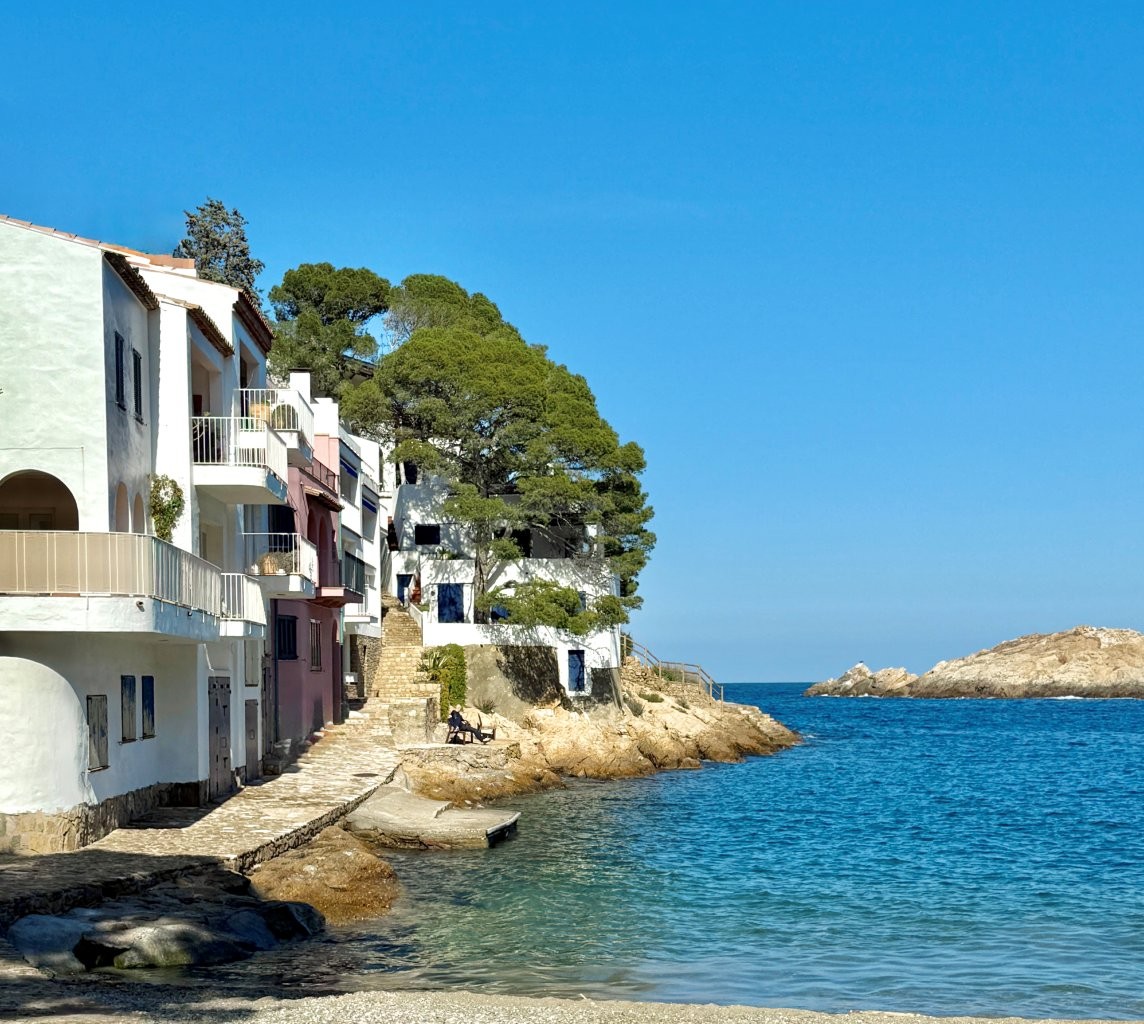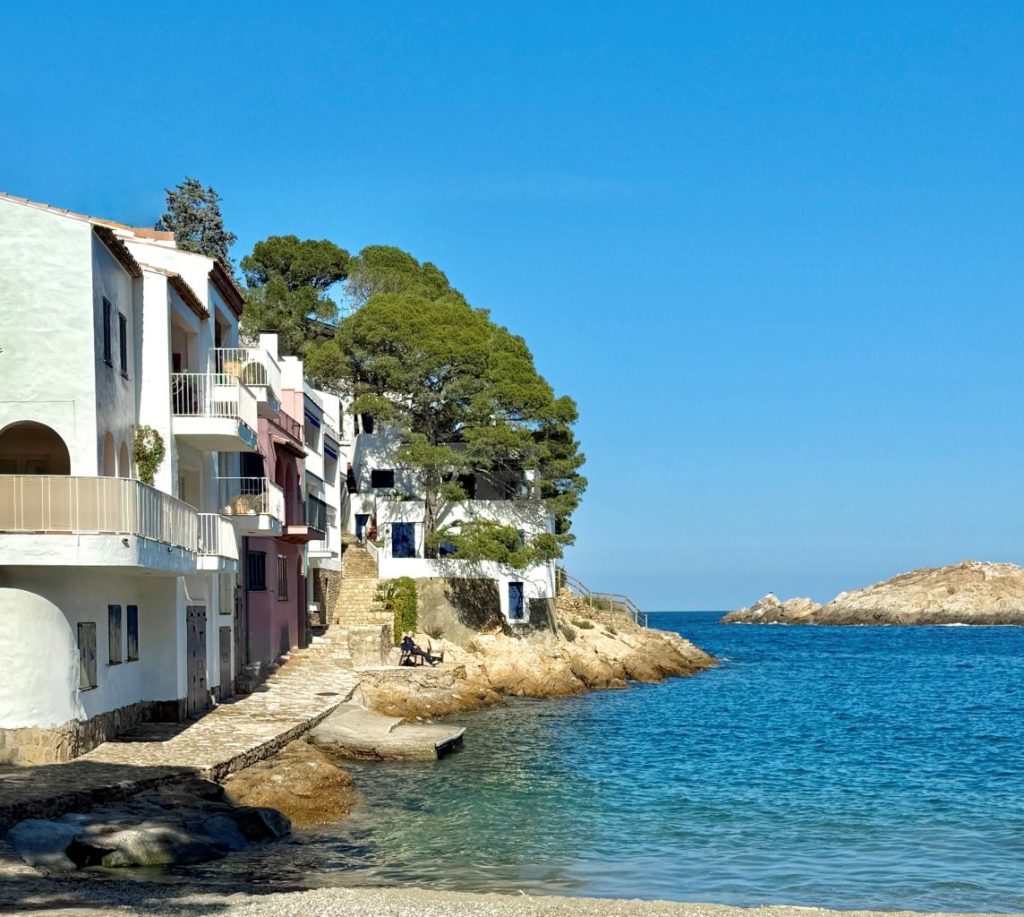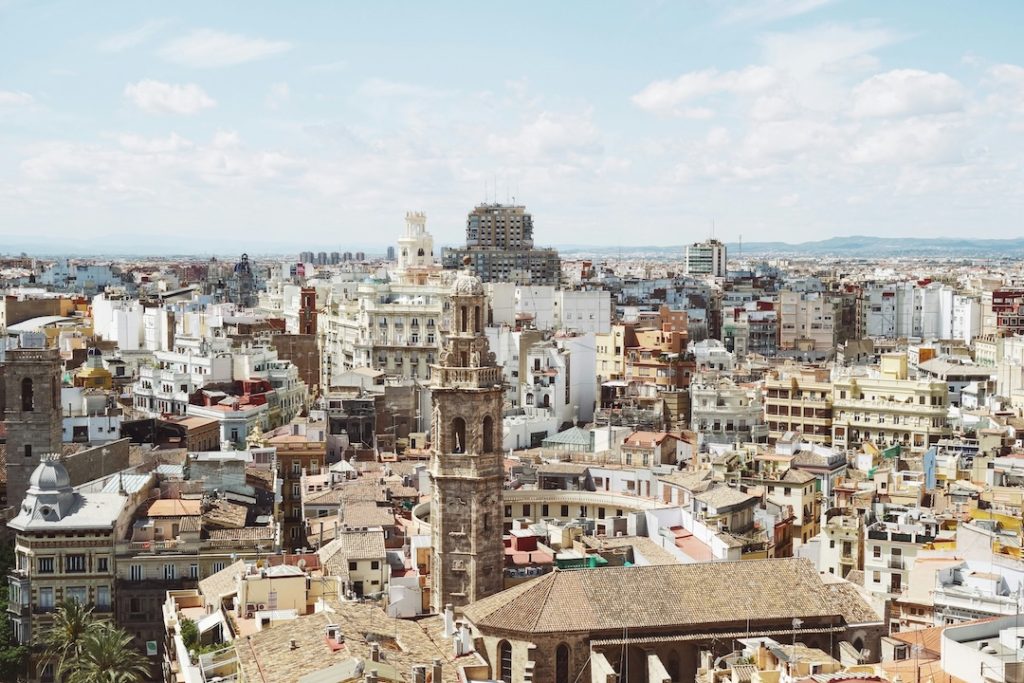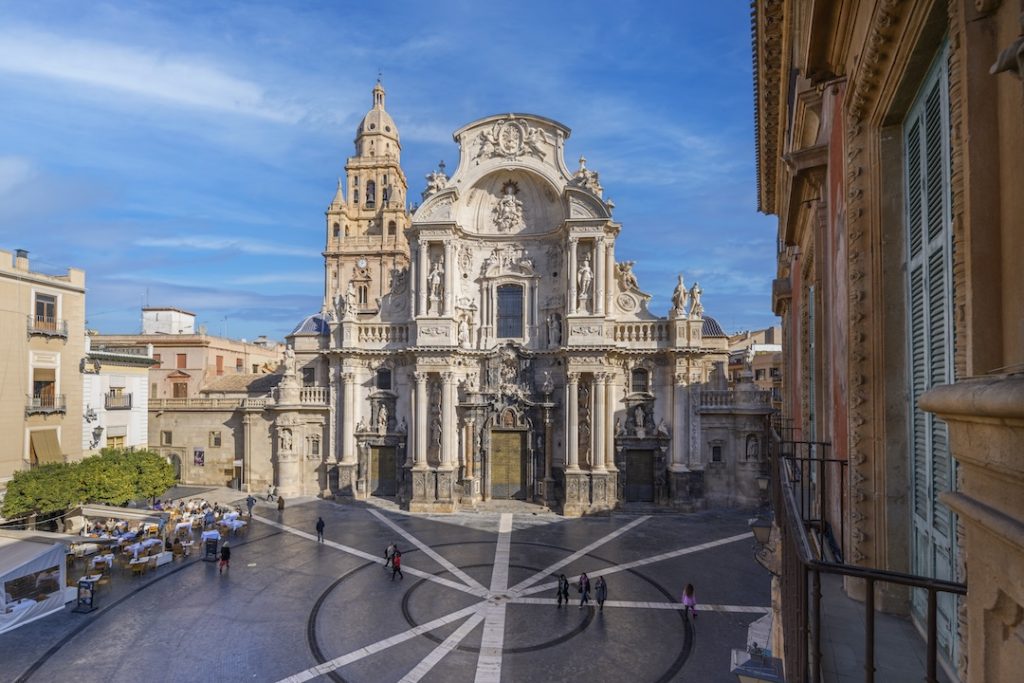Costa Brava is a region of Catalonia where coastline, countryside and culture come together with remarkable depth. This is where Ferran Adrià’s elBulli Foundation keeps alive the spirit of the restaurant that redefined contemporary cuisine, and where the Dalí Triangle connects Figueres, Portlligat and Púbol through surrealist landmarks. Inland villages reveal Romanesque churches and stone-paved squares, while the Camí de Ronda paths lead along headlands and secret coves. Our guide brings together food, art, history and landscapes to help shape your journey. Enjoy our guide for inspiration, and for more practical details, visit the official Costa Brava website. costabrava.org.
EAT
Esperit Roca, Girona
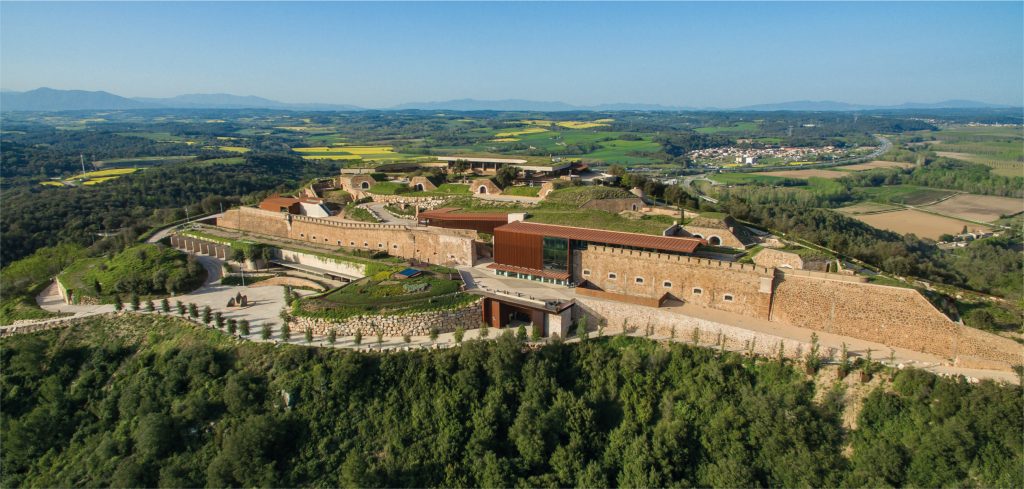
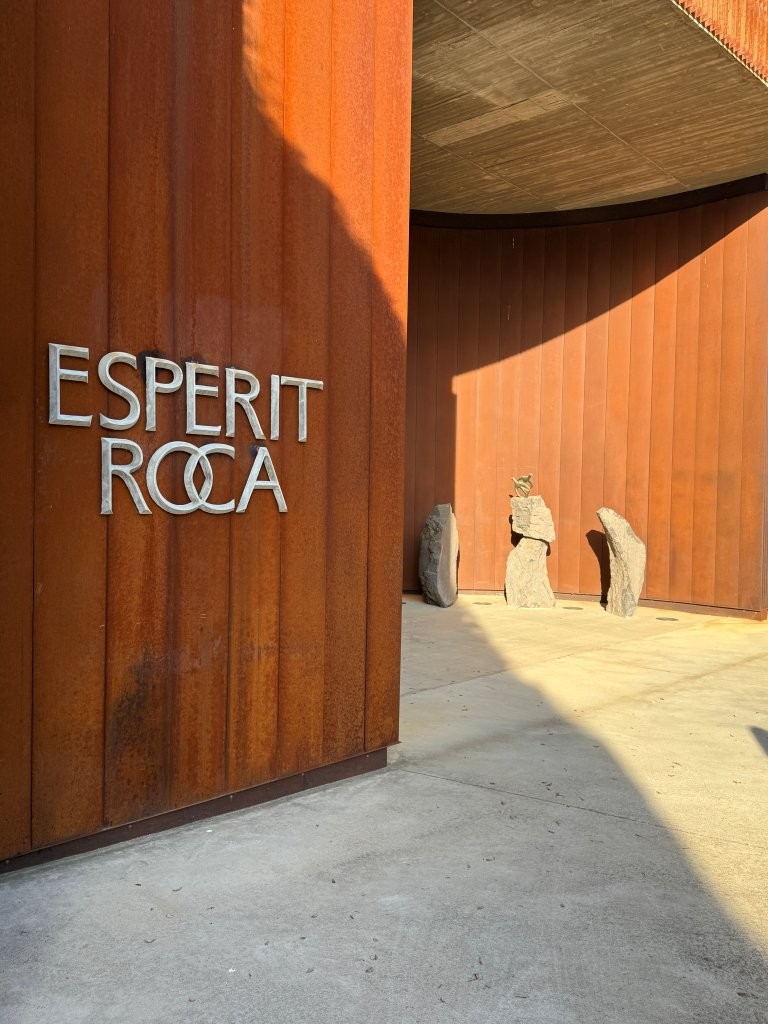
Esperit Roca occupies a 19th-century fortress just outside Girona, where minimalist brutalist architecture is softened by the natural surroundings. This gastronomic destination includes a hotel with fifteen rooms featuring earthy, neutral palettes with linen, wood, and concrete finishes. There are two destination restaurants, an extensive wine cellar, exhibition spaces, and landscaped gardens creating an immersive culinary citadel with outstanding views. Dining at the signature Esperit Roca restaurant is a sensory journey through the Roca brothers’ culinary universe. The menu revisits and reinterprets dishes from El Celler de Can Roca with fresh innovation and playfulness
Bar Vii, Girona
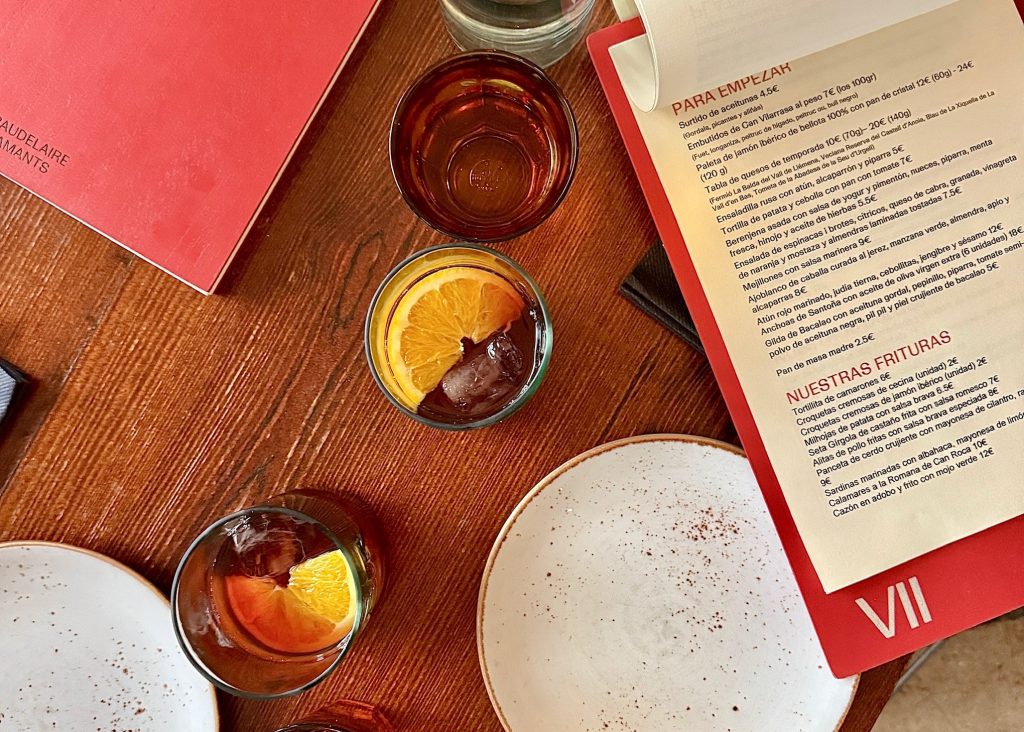
At Bar Vii, the atmosphere strikes a balance between relaxed and refined, drawing locals and visitors alike. The space features a clean, modern interior with a focus on quality wines from the region and beyond. A highlight of the visit was the selection of cured meats presented in a unique way. The entire range arrives on a wooden board, allowing you to choose and slice exactly what you want. This interactive approach encourages a slower, more mindful enjoyment of the flavours. When finished, the staff weigh what remains to determine the price, making the experience both personal and practical. Alongside the meats, small plates of seasonal dishes complement the wine selection, creating a convivial setting that feels genuine rather than staged.
Restaurant Casamar, Llafranc, Palafrugell
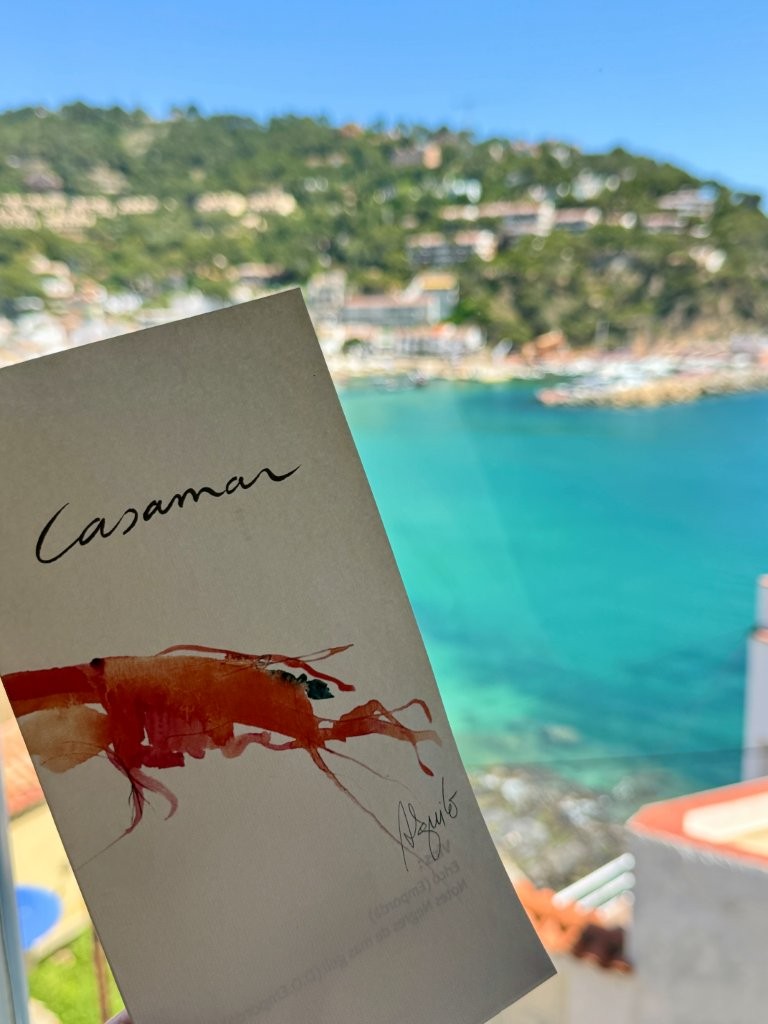
Set above the bay at Llafranc, Restaurant Casamar combines contemporary design with a warm, welcoming atmosphere. Run by Maria and Quim Casellas, siblings continuing a family tradition alongside their parents Josep Maria and Margarida, the restaurant feels personal and unpretentious. This summer they introduced a new anniversary menu alongside a renovation of the hotel, carefully preserving its original charm.
The kitchen’s focus is on local ingredients. Confit artichokes pair beautifully with cured pork belly, egg yolk, and a creamy Fermió cheese sauce, while the warm leek cannelloni with Norway lobster and cheese beurre blanc has become a house favourite. The wild sea bass is cooked slowly in a white broth infused with green seaweed, served alongside roasted vegetable mayonnaise, offering delicate complexity.
A refreshing lemon cream with celery granita provides a light finish. The restaurant uses ‘Can Salellas’ olive oil, a superior extra virgin variety from Argudell de Cantallops, extracted solely by mechanical means, adding a local authenticity to every dish.
Hotel Cala Jóncols Restaurant
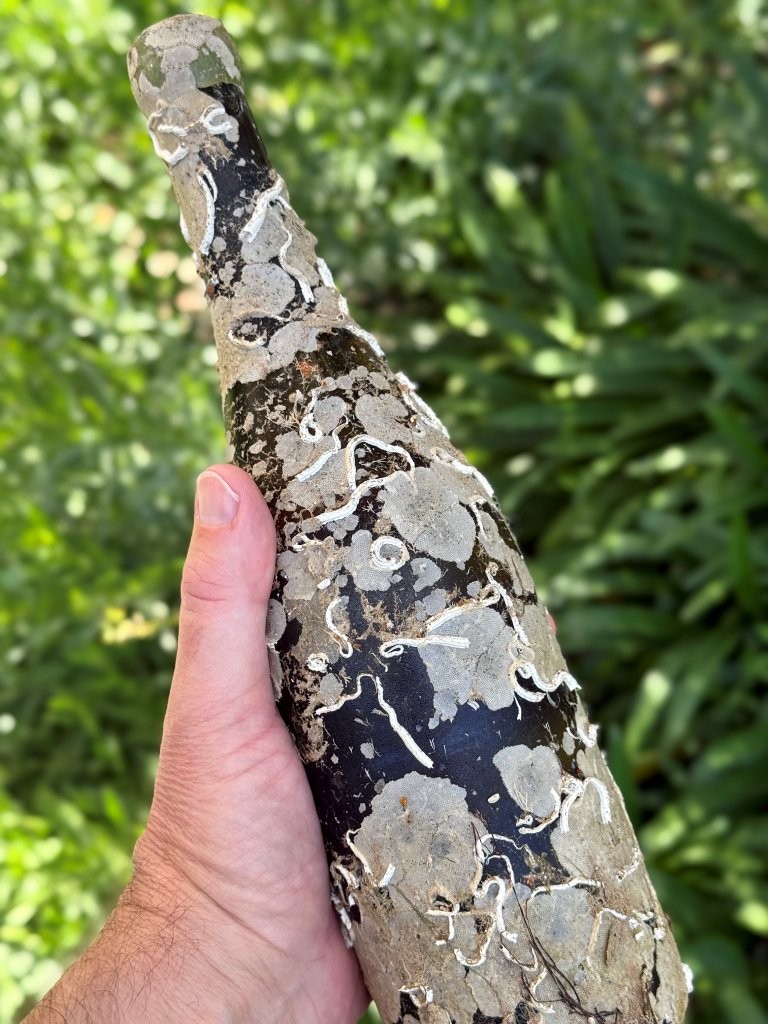
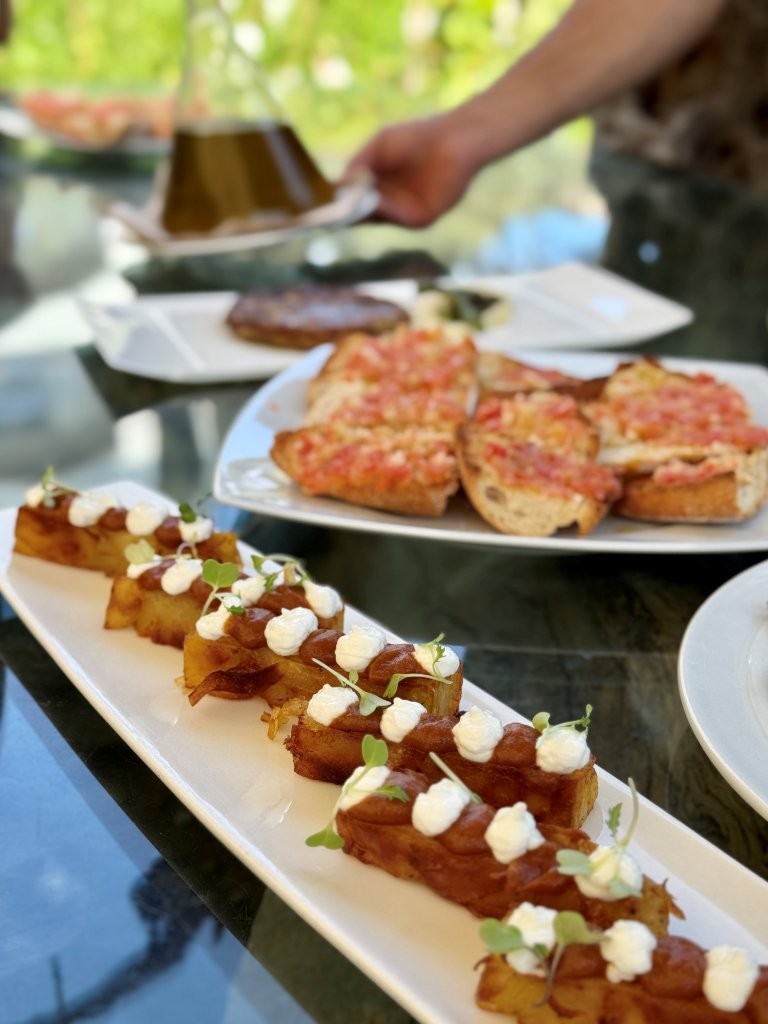
The water taxi skimmed across the bay, sunlight dancing on the waves as the rugged cliffs of Cap de Creus grew closer. Within minutes we reached Cala Jóncols, a secluded cove where one finds the family‑run Hotel Cala Jóncols. Standing quietly on the shore, its terrace facing the turquoise waters. It was here that Michael, one of the owners, welcomed us for lunch.
Michael is a pioneer behind a remarkable project, ageing wines beneath the sea. Since 2009, the family has lowered bottles to rest seventeen metres below the surface, where gentle currents and steady temperatures lend them a singular character. When brought back to land, their glass carries delicate traces of sand, shell and sediment, transformed by the sea into natural works of art. Lunch was unhurried, in true Mediterranean style. A simple pa amb tomàquet set the tone, followed by golden patatas bravas and other tapas to share. The fish, fresh from Roses fishermen, was delicate and moist.
Hotel Cala Jóncols is said to be the Costa Brava’s first zero‑waste hotel, with an impressive circular system that treats and reuses water, composts organic waste for the vineyards, and cleans entirely without harsh chemicals. The garden, redesigned with native species, thrives with quiet elegance, conserving water while providing a beautiful setting.
As we lingered on the terrace, the waves lapping softly against the shore, you are surrounded by the essence of Cap de Creus.
Compartir, Cadaqués
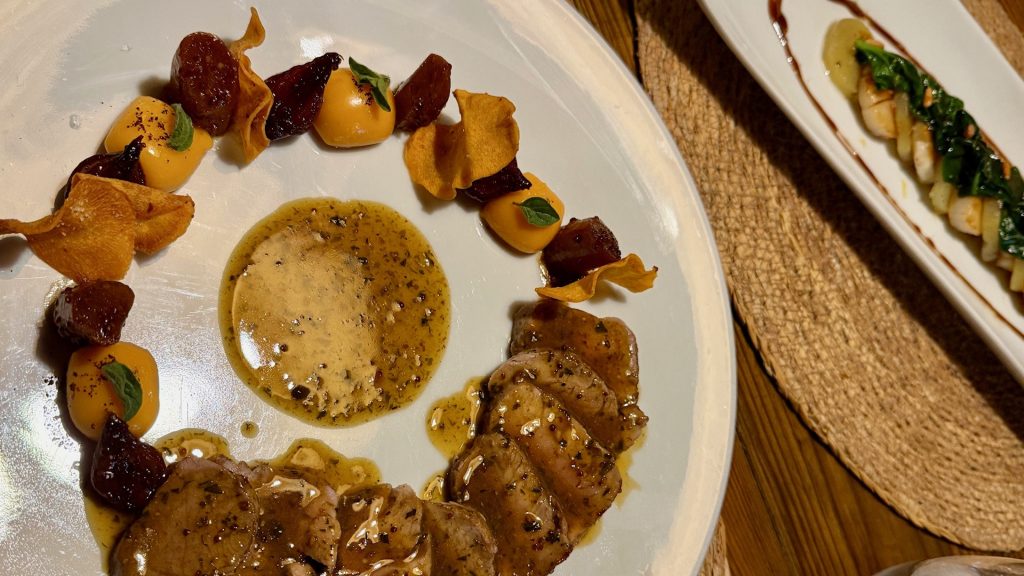
Located in the centre of Cadaqués, Compartir offers a relaxed dining atmosphere with a focus on sharing plates inspired by Catalan cuisine. Founded in 2012 by former El Bulli chefs Mateu Casañas, Oriol Castro, and Eduard Xatruch, the restaurant balances creativity with local tradition. The menu includes a variety of dishes such as fresh oysters, rice, and seasonal options, served either à la carte or as a well-priced tasting menu. The outdoor terrace is ideal for lunch, providing views of the village streets and a gentle Mediterranean breeze. This approachable yet thoughtful spot suits those looking for quality food without pretence in a charming seaside setting.
DO
elBulli1846
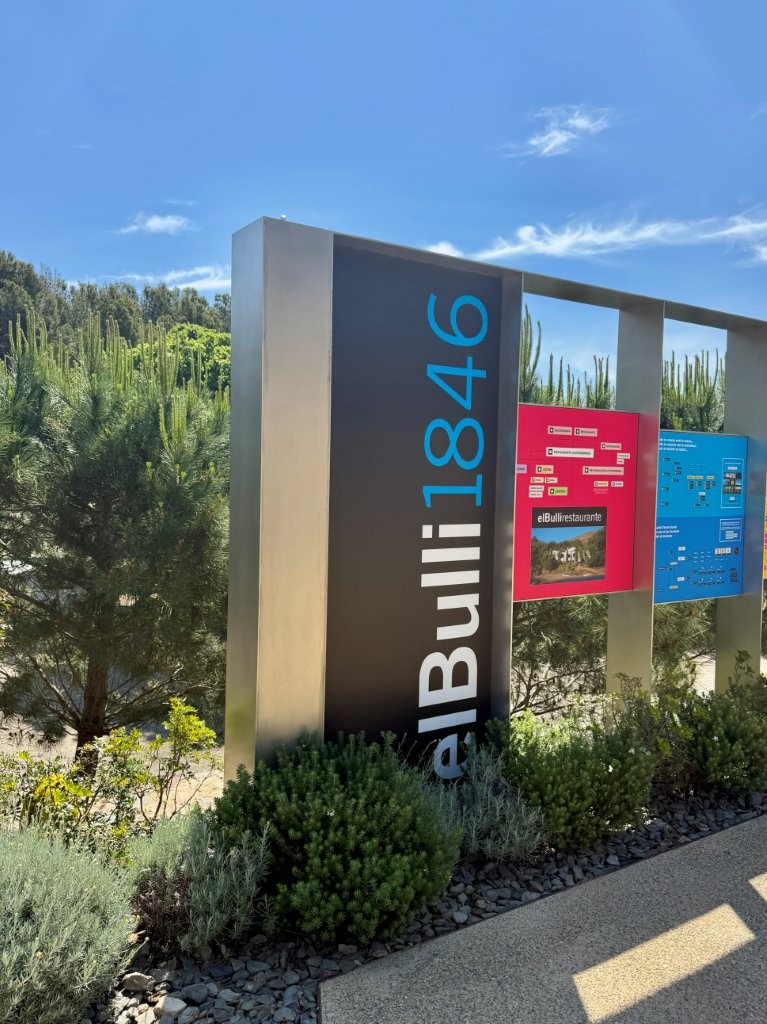
As we took each hairpin bend along the rugged road to Cala Montjoi, we caught further glimpses of a secluded cove came. There, amongst between pine‑clad cliffs and the sparkling Mediterranean, lies elBullí1846, the museum born from the legacy of Ferran Adrià’s former restaurant el Bulli.
elBullí1846 commemorates the astonishing 1,846 inventive dishes created over its lifetime. Spanning thousands of square metres, it covers over four distinct areas. Outdoor gardens invite quiet reflection on innovation, with a series of open-air exhibits that communicate the work of the elBulli Foundation and its Sapiens Methodology. Our guide Luis, was invaluable in helping us navigate these installations.
Once inside, the former dining room appears frozen in time. The summer terrace remains unnerving quiet. Wax and plastic models of signature dishes sit alongside archival photographs. In what was once the kitchen, a multimedia screen immerses you in the fevered pulse of its operational years as well as a wealth of archive material from chef jackets, as well as bespoke ceramics and utensils, tools developed and once used to redefine cuisine.
Visits last around two and a half hours. If you don’t have a private guide, make sure you download the complimentary guide app available in English, Catalan, Spanish and French. The route weaves between indoor and outdoor zones, allowing space to absorb both culinary genius and the serene beauty of the Cap de Creus Natural Park.
The museum opens from mid‑April to early November, Tuesday to Saturday (last entry 14:00) .
No café lies within the museum. Instead, the gift shop offers snacks or souvenirs before guests emerge again into the coastal light.
By the end, you understand the true significance of this place and how it changed how we think about gastronomy.
The Dalí Theatre‑Museum, Figueres
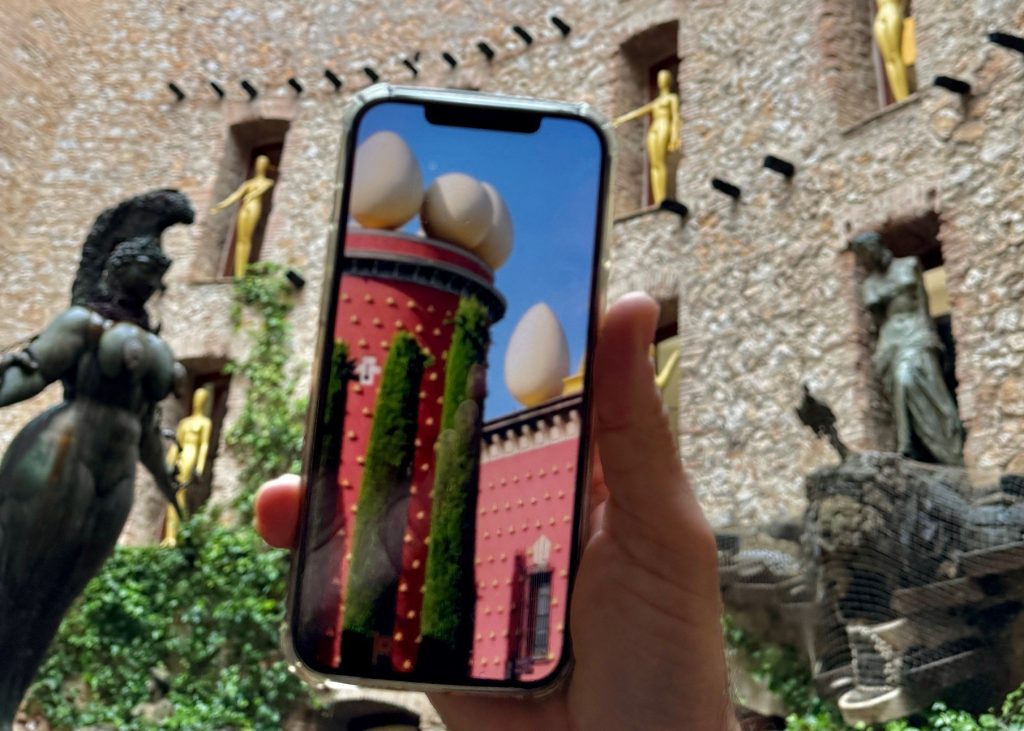
The Dalí Theatre‑Museum in Figueres stands as Salvador Dalí’s final masterpiece, conceived by the artist himself upon the ruins of the town’s municipal theatre (the burnt beams of the original theatre tendon as a reminder of the civil war). It opened in 1974, crowned by the geodesic glass dome, while the façade, in a deep red, is dotted with golden loaves of bread and topped by a row of surreal eggs upon each tower.
A stroll through its labyrinthine chambers reveals over 1,500 works by Dalí, including paintings, sculptures and dreamlike installations spanning his entire career. Among them, iconic pieces like ‘Leda Atomica’ and ‘Galatea of the Spheres’ evoke the landscapes and mysticism of the Emporia, while the Mae West Room and Rainy Cadillac installation illustrate his theatrical vision in physical form.
But be warned, this venue often admits far too many people do when there are regular school trips the experience is significantly impacted by the overwhelming number of people and often it’s impossible to see the artworks.
If you arrive in summer, consider an evening visit, bookable in advance.
In the crypt beneath the theatre’s stage lies Dalí’s final resting place.
Plan to spend at least two hours soaking in the interplay of architecture and surrealism in this immersive monument to Dalí’s life. Located barely twelve minutes on foot from Figueres station, it serves as the gateway to the ‘ Dalí Triangle’ which includes his theatre in Figueres, his private home in Portlligat where he lived for decades with Gala, and the castle at Púbol that he gifted her in later life.
Salvador Dalí House-Museum, Portlligat
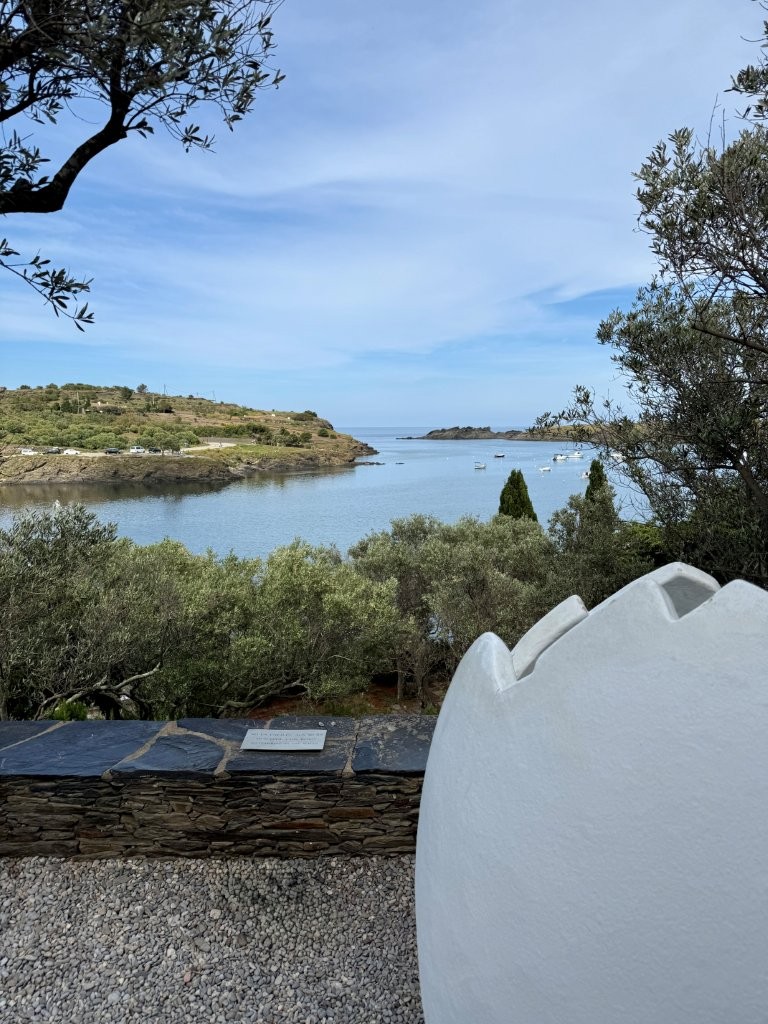
Salvador Dalí’s home in Portlligat reveals the surreal world he and Gala inhabited, a fascinating labyrinth of rooms and buildings where his art and their life together entwined.
Found on the edge of the small, sheltered bay of Portlligat, the house began as a humble fisherman’s hut in 1930. Over the next forty years, Dalí and Gala gradually expanded it by purchasingan an adjacent fishermen’s hut, creating interconnected buildings, each reflecting a new era in their lives.
Upon out arrival, by private transfer with Blue Experience Cadaqués the bright yellow boat Gala loved was moored in the tranquil bay. It is now restored and available for private experiences.
Inside the house, corridors and stairs rise and dip, leading to odd corners and unexpected rooms. The initial Bear Hall greets you with a taxideried bear that doubles as a lamp‑holder and umbrella stand. Above its head, a silent owl peers back, signalling Dalí’s fascination with the living and uncanny. Each room frames the bay through windows of different shapes and sizes, turning the same view into a recurring motif.
In the airy studio, sunlight falls upon canvases left exactly as Dalí painted them. Brushes, paints, and unfinished works rest in their original places. Two paintings remain untitled and suspended in 1982, when Dalí left upon Gala’s death.
The visit continues in into Gala’s dressing room and intimate living spaces, including the bedroom where a carefully positioned mirror afforded Dali a view of the bay. Outside, courtyards and a penis shaped swimming pool continue to surprise, as well as the iconic dovecote. Above the house, an olive grove overlooking the bay provides a dreamscape where surreal sculptures and playful installations mingle with nature.
Visits last around an hour under a guided tour only; advanced booking is essential. Open seasonally, with carefully timed admissions to preserve both intimacy.
Gala Dalí Castle, Púbol
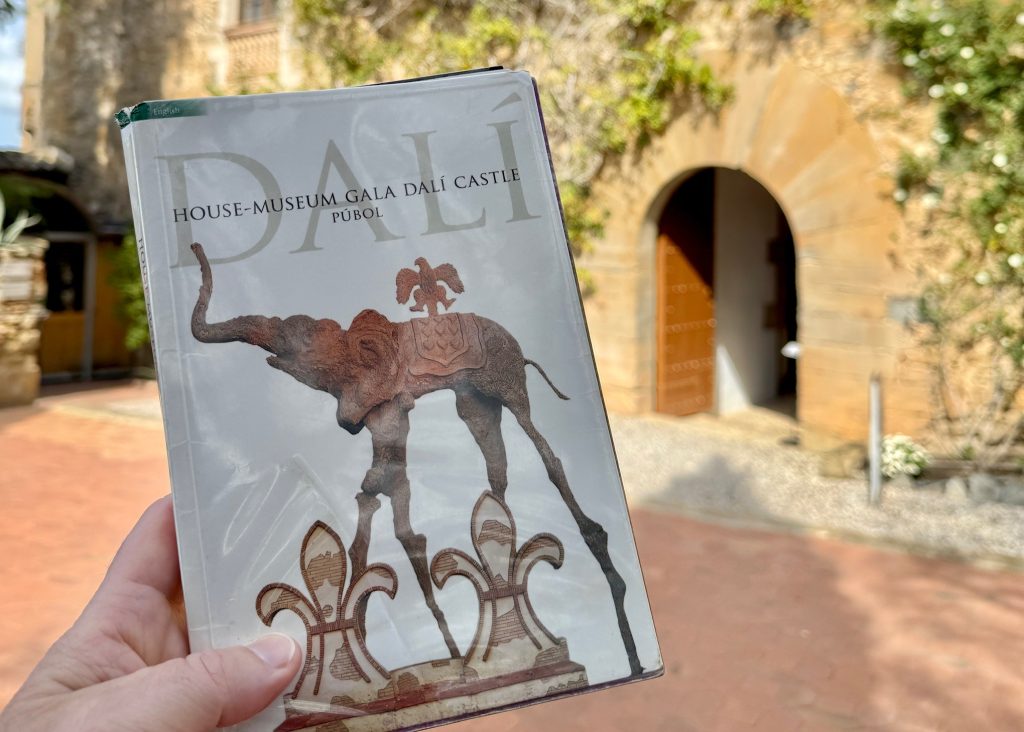
This was my favourite experience on the Dali Triangle. Peaceful, uncrowded and meaningful. Found in the charming village of Púbol in Baix Empordà, the Gala Dalí Castle, is a medieval fortified house, transformed by Salvador Dalí into a sanctuary for his muse, and later for a short time his own creative refuge.
Purchased in the late 1960s, the castle began as a dilapidated Gothic structure before Dalí’s visionary restoration.
Guided tours (which are excellent) venture through rooms that once belonged to Gala. There are photographs of her enjoying these spaces, a touch that really brings the experience to life. The Piano Room resonates with elegance, while a former kitchen now serves as a bath space drenched in surreal detail. Each chamber reflects Gala’s personality and Dalí’s devotion.
The intimate kitchen is a snapshot in time. The cook’s family still maintain the same restaurant in the village.
Outside, the walled garden unfolds with playful sculptures: slender-legged elephants (if you’re lucky, the guide will turn on the fountains, water spraying gently from the elephant’s trunks) and busts of Wagner rising from the pool.
Gala was laid to rest in a mausoleum beneath the castle, while Dalí occupied the castle in the early 1980s, making it both his creative studio and her memorial. He set fire to the bedroom and subsequently left to live in his theatre, so was laid to rest there, not beside his beloved Gala in the castle. Since opening to the public in 1996, it has formed the third site in the Dalí Triangle, alongside Portlligat and Figueres.
Plan at least ninety minutes to wander the interior and grounds. Tickets cost around €9–12, with guided tours (recommended) available for an additional €16–20 depending on season and whether purchased online . In summer months, intimate night visits take place on Thursday and Friday evenings, limited to twenty guests, revealing the castle under soft lights and music chosen by Dalí himself.
Cadaqués Bluexperience
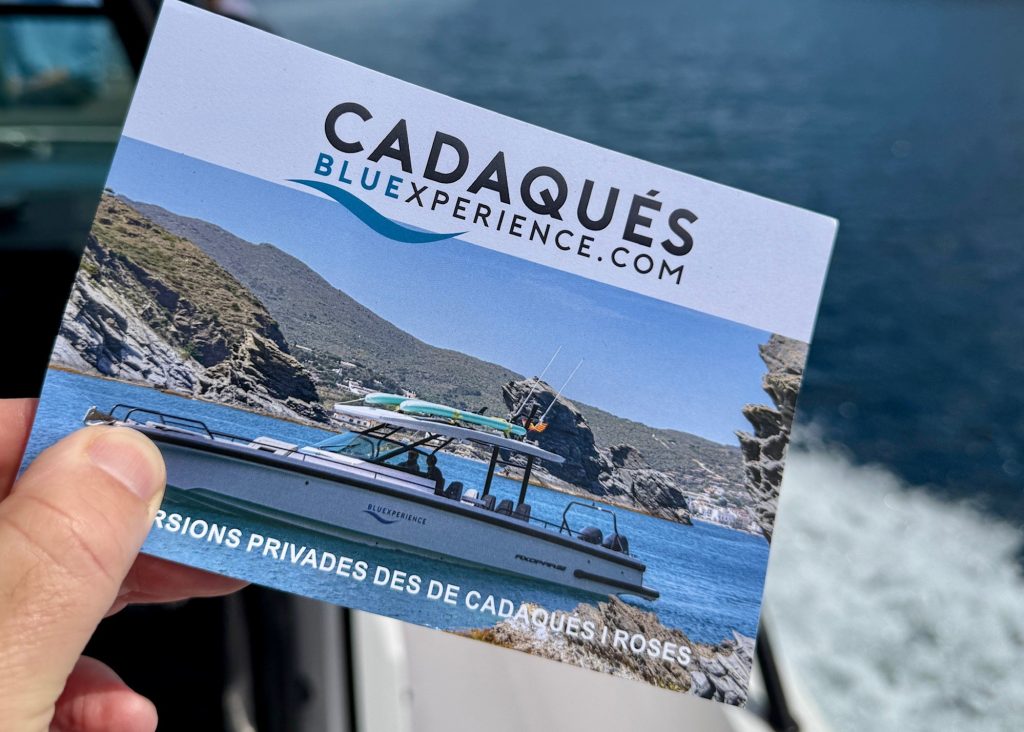
Cadaqués Bluexperience offers private, tailor-made boat tours along the breathtaking coastline of Cap de Creus Natural Park, departing from Cadaqués, Roses, or tailormade like our departure from Hotel Cala Jóncols. Founded in 2019 by Erik Tarrés Lenneryd and Pilar Claret Godó, this experience combines expert navigation with personal attention.
Routes vary, from sunset cruises and wild nature explorations to leisurely picnics on secluded beaches. On my trip, we set off from Hotel Cala Jóncols, speeding through the sparkling Mediterranean toward the Salvador Dalí House in Port Lligat. Along the way, we explored sea caves, felt the exhilaration of the boat slicing through the water, and enjoyed tranquil moments gazing into the crystal-clear depths where vibrant sea grass and colourful fish flourished beneath us.
Whether you’re seeking adrenaline or calm, Cadaqués Bluexperience offers a unique, intimate way to connect with the rugged beauty and rich marine life of the Costa Brava’s protected waters.
Aqua Banys Romans, Girona
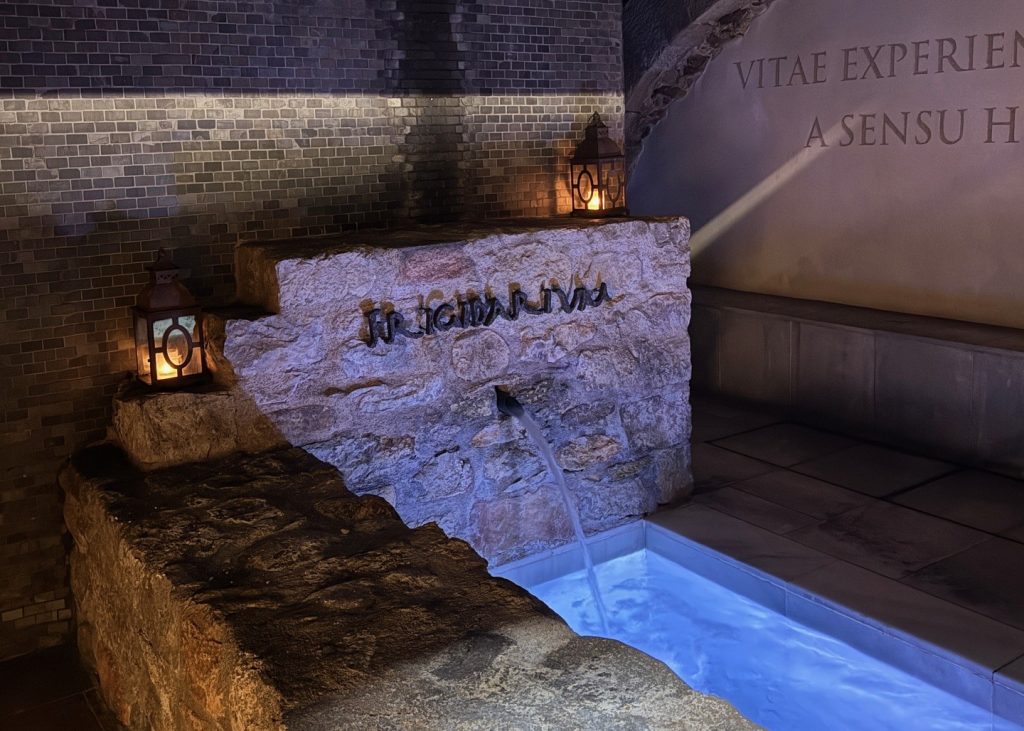
In the heart of Girona’s Barri Vell, Aqva Banys Romans offers a blend of ancient Roman bathing traditions and modern wellness. Housed in a structure dating back to the 12th century, the facility preserves elements from a Roman villa, including walls from the 2nd century AD and a 1st-century furnace . Visitors can immerse themselves in a 90-minute thermal circuit featuring three pools: the cold Frigidarium, the warm Tepidarium, and the hot Caldarium. The Tepidarium is particularly notable for its floating saltwater pool, offering a unique bathing experience.
For those seeking relaxation beyond the thermal baths, Aqva offers a range of treatments, including massages. The spa’s design incorporates elements from its Roman past, providing a tranquil setting to unwind.
Aqva Banys Romans provides a serene retreat in Girona, combining historical ambiance with contemporary wellness practices. It’s an ideal spot for those looking to relax and rejuvenate in a setting rich with history.
Pottery Workshop, Gla Empordà
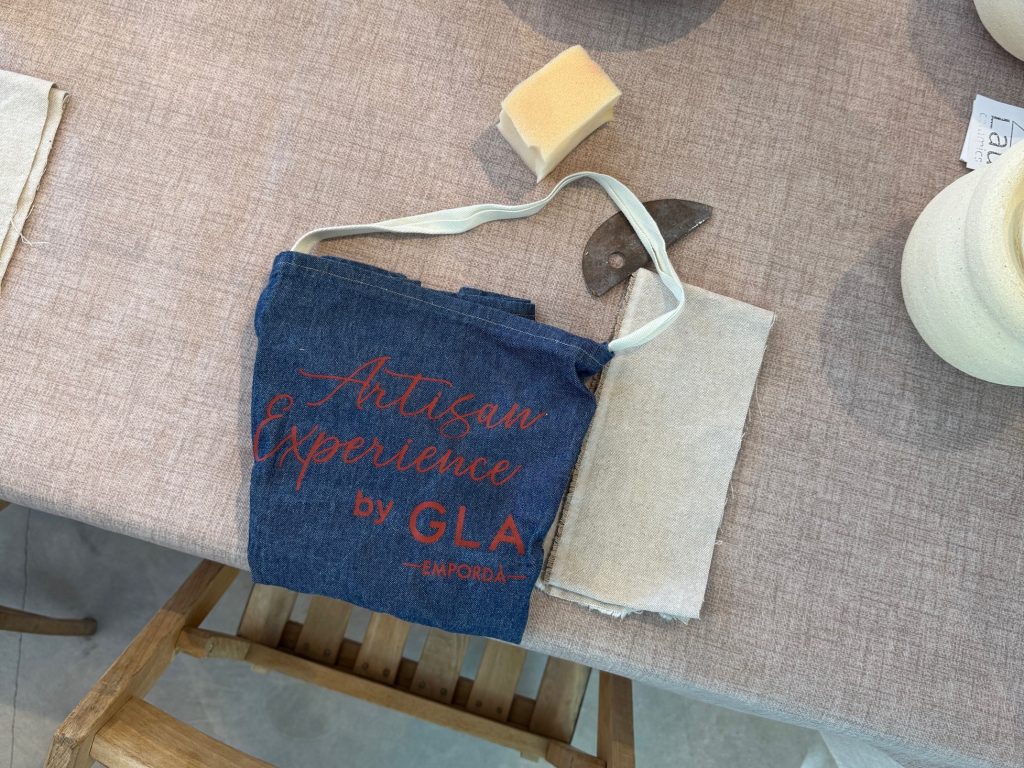
Spend a few hours at a pottery workshop led by Piluca Paulí, a local artisan deeply connected to the traditions of the Empordà region. Gla, known for its vibrant community of craftspeople, provides the perfect backdrop to try your hand at shaping clay. The workshop takes place in an intimate studio where you can learn basic techniques, guided patiently by Piluca. Creating something with your own hands invites a slower pace, a break from the usual tourist trail. The process feels grounding, as you focus on form and texture, while surrounded by the quiet charm of this artisan area. Booking is straightforward through Instagram, making it easy to arrange a session that suits your schedule. The workshop is not about perfection but about engaging with local culture through craft, offering a memorable and tactile connection to this part of Catalonia.
Road Trip Along the Costa Brava Coast

Hire a car and set off to explore some of the Costa Brava’s most picturesque villages. Drive along the rugged coastline and stop at charming spots like Calella de Palafrugell, where narrow streets lead to pebble beaches and seafood restaurants. Nearby, Llafranc offers a peaceful harbour and a relaxed atmosphere perfect for a leisurely lunch. Continue to Begur, a village known for its medieval castle ruins and winding streets. Along the way, discover coves such as Aiguablava, Aiguafreda, Tamariu, and Sa Tuna, each with their own unique character, from turquoise waters to quiet bays framed by pine trees. This road trip invites you to move at your own pace, pausing to wander, swim, or enjoy a coffee while taking in the scenery. The changing light along the coast makes for memorable views and plenty of photo opportunities. It’s a simple way to connect with the heart of the Costa Brava
Medieval Villages: Pals and Peratallada
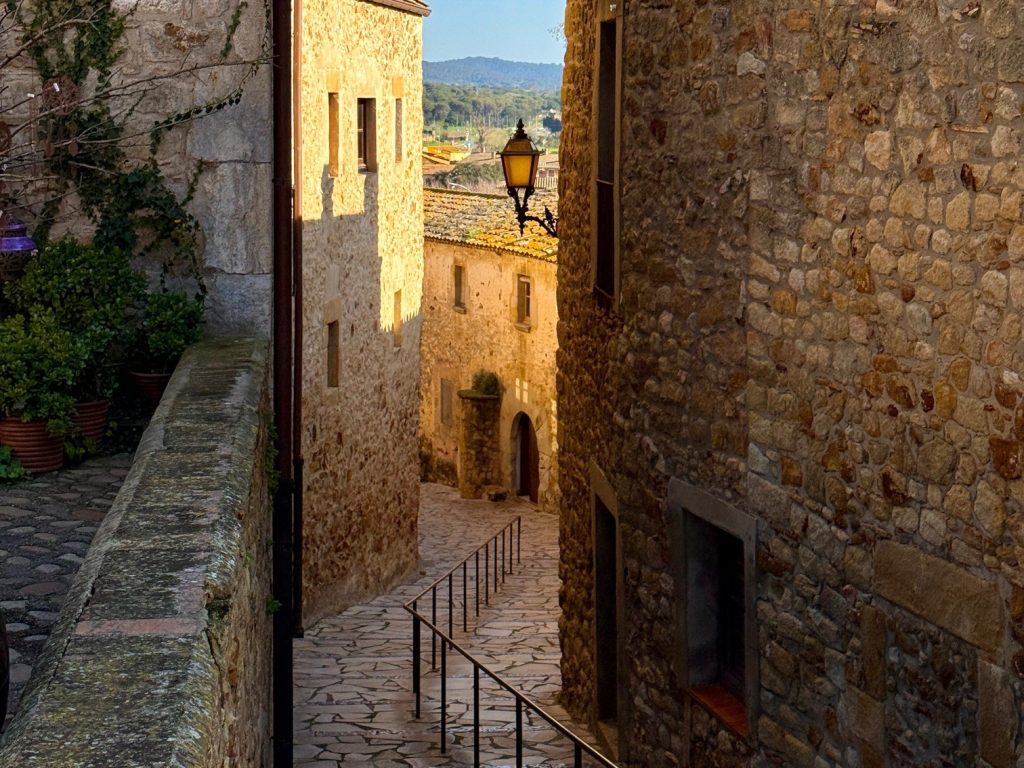
Explore the medieval villages of Pals and Peratallada by bike, setting off from your base at Más de Torrent, which offers electric pedal bikes for guests. Cycling through the gently rolling countryside brings a fresh perspective to these historic towns, allowing you to take in the quiet lanes and stone streets at a relaxed pace. Pals enchants with its cobbled streets, ancient towers, and views over rice fields, while Peratallada boasts winding alleys, fortified walls, and charming squares. Both villages carry the weight of history in their architecture and atmosphere yet remain lively with cafés and artisan shops. Biking between them lets you enjoy the surrounding landscape, passing through olive groves and farmland. The electric assist helps navigate the gentle hills without effort, leaving more energy to savour the local cuisine and small galleries. This outing feels like stepping back in time while embracing the ease of modern exploration.
STAY
Hotel Villa Salvador, Cadaqués
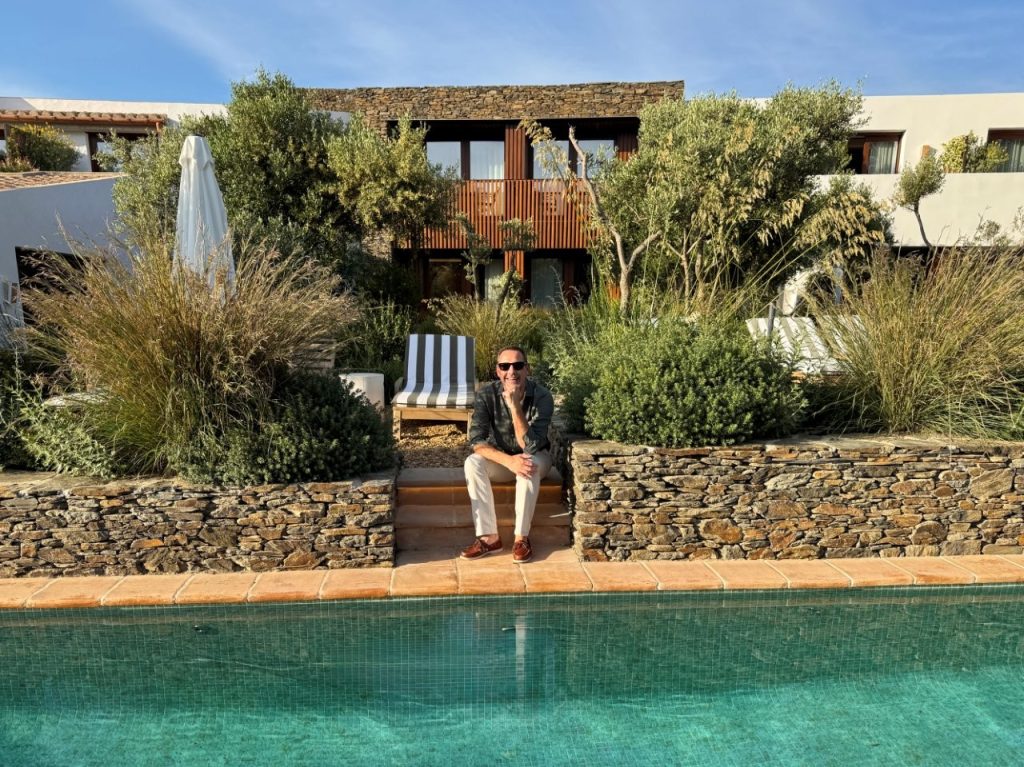
The boutique sixteen-room hotel Villa Salvador, with a Mediterranean restaurant, sits on the edge of Cadaques, often cited as Catalonia’s prettiest coastal village. Set in landscaped Mediterranean gardens shaded by pine trees, with a saltwater pool, the villa is just minutes from two quiet sandy bays. An ideal base for visiting the nearby Dalí’s house museum and exploring the spectacular Cap de Creus Natural Park peninsula.
Hotel Perelada, Wine, Spa & Golf
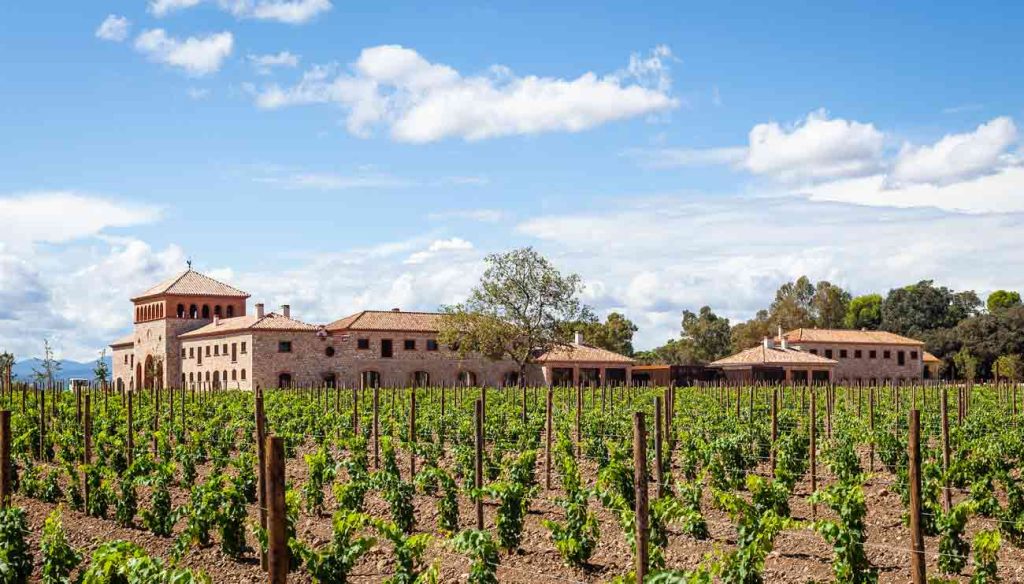
Hotel Peralada Wine Spa & Golf offers an immersive wine country experience in the heart of Alt Empordà, set within a historic estate that includes a 14th-century castle, monastery, and cutting-edge winery designed by Pritzker Prize-winning architects, RCR Arquitectes. The 64-room contemporary hotel has rooms and suites named after famous operas performed at the annual Peralada Festival. Under the expert direction of siblings Javier, Miguel and Isabel Suqué, this five-star boutique hotel has earned a Michelin Key recognition, combining superb sporting facilities, cultural attractions and the region’s rich viticultural heritage with contemporary luxury.
Hotel Palau Fugit, Girona
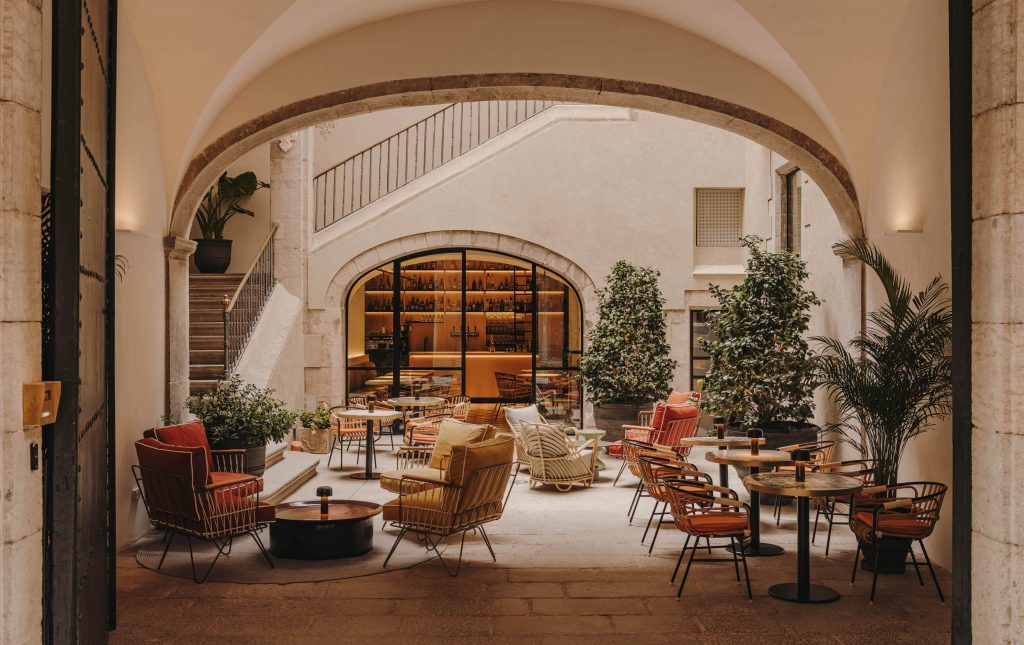
Palau Fugit transforms an 18th-century baroque palace in Girona’s historic quarter into a contemporary boutique hotel where contemporary art and culture complement rich heritage. This intimate property, with characterful original stone walls and beamed ceilings, is also home to local creativity, with commissioned murals, sculptures as well as custom room fragrances. The hotel’s philosophy centres on ‘La Vida Plena’ – living life to the full – encouraging guests to disconnect from routine and reconnect with culture, nature and the present moment.
Hotel Más de Torrent
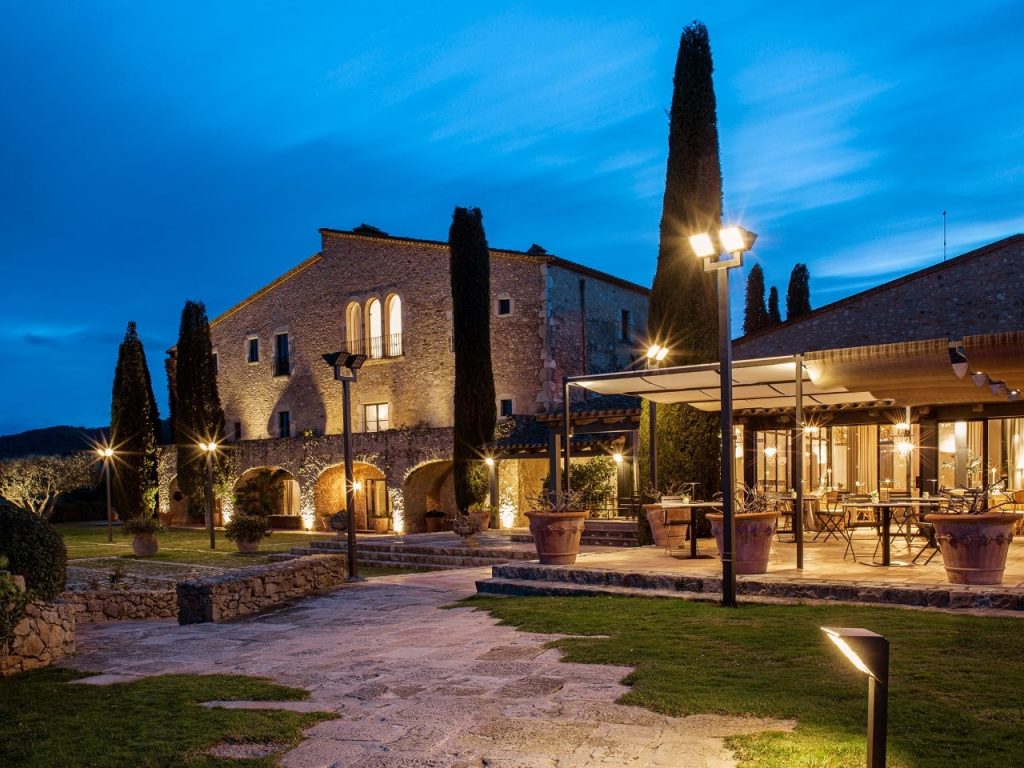
Mas de Torrent captivates as an elegant, timeless sanctuary in the Empordà countryside of Costa Brava. This distinguished Relais & Châteaux property centres around an 18th-century Catalan masía (farmhouse) that has been restored while preserving its authentic character and soul. The estate encompasses sophisticated suites distributed between the historic main building, garden bungalows and two signature suites, some featuring private pools and secluded terraces with sweeping views across the golden landscape. There’s the signature Mas de Torrent restaurant showcasing Catalan culinary heritage, to rejuvenating treatments at the spectacular 600m² standalone Mas Spa with its heated indoor pool.
Can Mascort Eco Hotel, Palafrugell
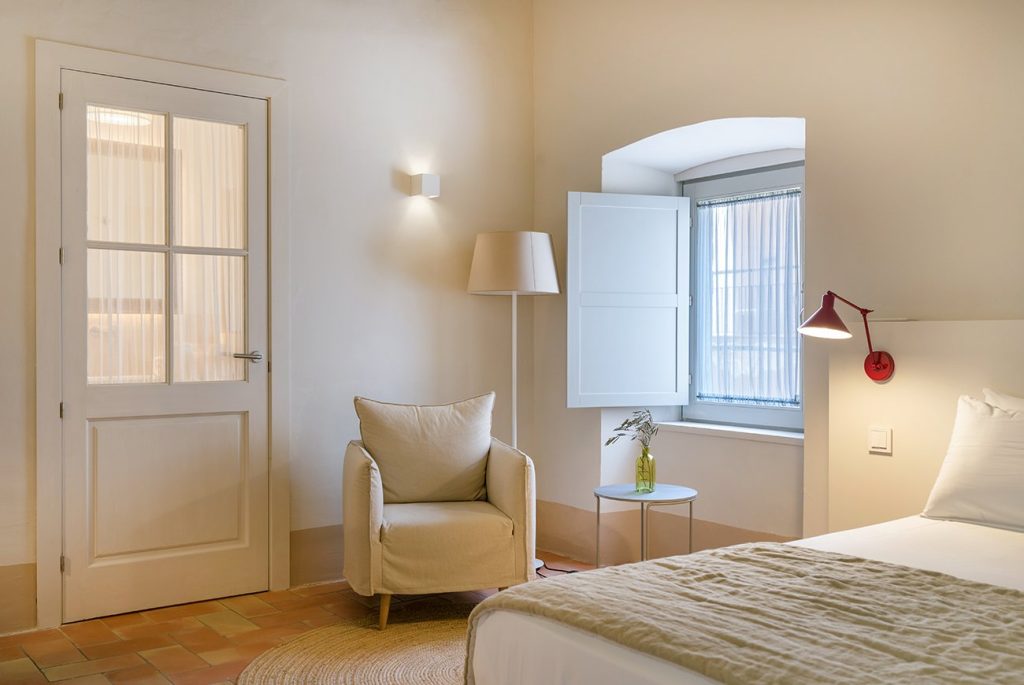
A 300-year-old noble house transformed into a sustainable boutique B&B by passionate hosts Lourdes and Alfred in Palafrugell’s historic centre. Can Mascort Eco Hotel is a thoughtfully restored 15-room hotel that combines traditional Catalan charm with contemporary minimalist style, featuring a private caldarium, ground-floor café with local artisan products, and rooftop terrace just four kilometres from Costa Brava beaches.
Mas dels Arbres Villa Rental
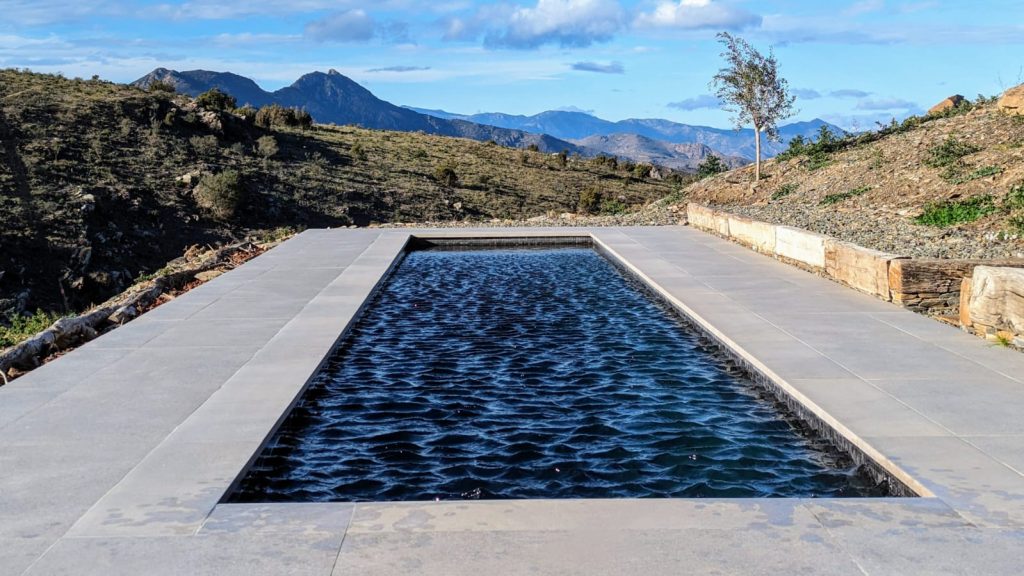
Set within the heart of Cap de Creus Natural Park, this lovingly restored 17th-century masía offers an intimate escape on Costa Brava’s wildest coastline. Built from local stone in warm golds and ochres, Mas dels Arbres sits on 100 hectares of protected landscape that once inspired Miró, Duchamp, Picasso and Dalí. Owner Donald Reid has transformed this abandoned farmhouse into a sophisticated 5-bedroom retreat, blending historic architecture with contemporary design. Available for exclusive villa rental or individual room bookings, the property features a lap pool, curated art collection, and views stretching to the French coast and Pyrenees.

